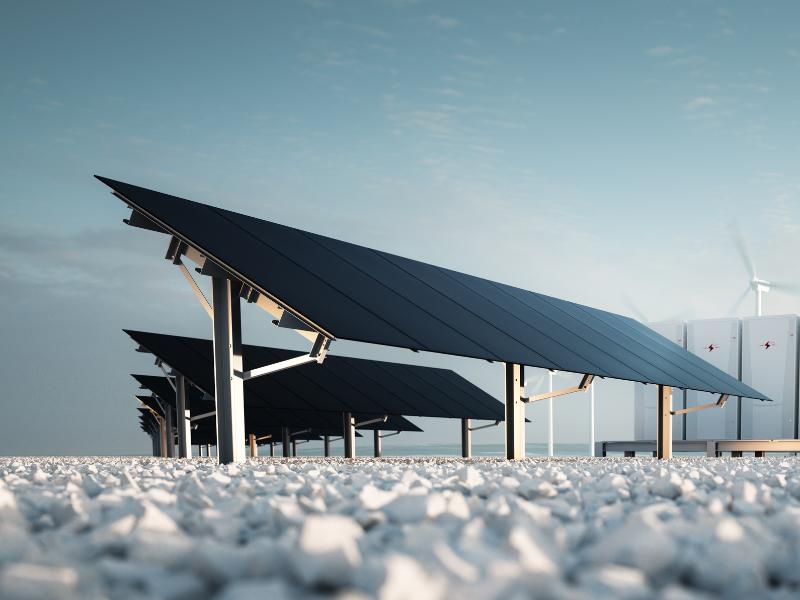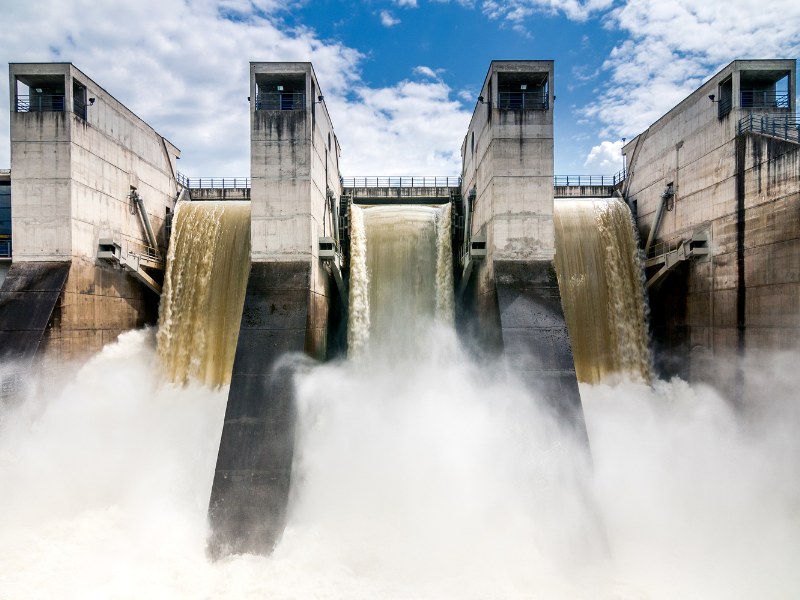Welcome to our comprehensive guide on renewable energy systems! In this article, we will explore the various aspects of renewable energy systems and their significance in achieving a sustainable future. Renewable energy systems play a crucial role in minimizing our reliance on fossil fuels and reducing greenhouse gas emissions. We will delve into the working mechanisms, types, advantages, challenges, and future prospects of renewable energy systems. So, let’s dive in and explore the exciting world of renewable energy systems!
What are Renewable Energy Systems?
Renewable energy systems are a set of technologies and infrastructure designed to harness energy from renewable sources, such as sunlight, wind, water, geothermal heat, and organic matter. These systems convert these readily available and replenishable energy sources into usable forms of power, including electricity, heat, and mechanical energy.
How Do Renewable Energy Systems Work?
Renewable energy systems function by capturing and converting the energy from renewable sources into usable power. The working mechanism varies depending on the specific type of renewable energy system. However, a common element among all renewable energy systems is the utilization of natural resources that are continuously replenished by natural processes.
Types of Renewable Energy Systems
There are several types of renewable energy systems, each harnessing a different renewable resource. Let’s explore some of the most prominent ones:
Solar Power Systems

Solar power systems utilize photovoltaic cells or solar thermal collectors to capture the sun’s energy. Photovoltaic cells convert sunlight directly into electricity, while solar thermal collectors use sunlight to generate heat. Both methods provide clean and sustainable energy for a variety of applications.
Wind Power Systems

Wind power systems harness the energy present in the movement of air. Wind turbines, consisting of large blades and a rotor, capture the kinetic energy of the wind and convert it into electricity. Wind power systems are commonly utilized in large-scale wind farms and can play a significant role in meeting global energy demands.
Hydroelectric Power Systems

Hydroelectric power systems harness the gravitational potential energy stored in flowing water. Dams and turbines are used to capture the energy from water in rivers and reservoirs, converting it into electricity. Hydroelectric power is one of the most common and established forms of renewable energy, with large-scale hydroelectric plants providing substantial amounts of power globally.
Geothermal Power Systems

Geothermal power systems utilize the heat trapped beneath the Earth’s crust. By tapping into geothermal reservoirs, hot water and steam are brought to the surface to drive turbines, generating electricity. Geothermal power systems are often found in regions with high geothermal energy potential, such as geologically active areas and proximity to geothermal vents.
Biomass Power Systems

Biomass power systems exploit organic matter, such as agricultural waste, wood chips, and dedicated energy crops, to generate heat, electricity, or biofuels. Through processes like combustion, gasification, and anaerobic digestion, biomass is converted into energy-rich substances for various applications, contributing to a more sustainable energy mix.
Advantages of Renewable Energy Systems

Renewable energy systems offer numerous benefits over traditional fossil fuel-based energy sources. Let’s explore some of the key advantages:
Environmental Benefits
Renewable energy systems have a significantly lower environmental impact compared to fossil fuel-based energy systems. They do not produce greenhouse gas emissions or contribute to air pollution, reducing the overall carbon footprint. Additionally, the use of renewable energy systems helps combat climate change, preserve ecosystems, and protect biodiversity.
Economic Benefits
The deployment of renewable energy systems stimulates economic growth and job creation. The renewable energy sector offers a wide range of employment opportunities, from manufacturing and installation to maintenance and research. Moreover, renewable energy systems provide a reliable and cost-effective energy source, reducing long-term energy costs for individuals, businesses, and governments.
Social Benefits
Renewable energy systems promote energy independence and energy access for remote or underprivileged communities. By diversifying the energy mix, renewable energy systems ensure a stable and secure energy supply, minimizing the vulnerability to fuel price fluctuations and geopolitical tensions. Additionally, renewable energy projects often bring social co-benefits, such as improved public health, enhanced infrastructure, and community development.
Challenges of Renewable Energy Systems
While renewable energy systems offer numerous advantages, they also face several challenges. Let’s discuss some of the key challenges associated with renewable energy systems:
Cost
One of the primary challenges for renewable energy systems is the initial cost of installation and infrastructure development. Although the cost of renewable technologies has significantly decreased in recent years, it still remains relatively higher compared to conventional energy sources. However, as technology advances, economies of scale are achieved, and policies favoring renewable energy are implemented, the cost of renewable energy systems is expected to decrease further.
Intermittency
Renewable energy systems, such as solar and wind power, are dependent on weather conditions and natural resources, leading to intermittent power generation. This intermittency poses challenges in balancing electricity supply and demand, as the availability of renewable energy fluctuates. Advanced energy storage systems and smart grid technologies are being developed to mitigate these challenges and ensure a stable energy supply.
Land Use
Certain renewable energy systems, such as large-scale solar farms and wind turbines, require substantial land area for deployment. This can pose challenges in terms of land availability, land use conflicts, and potential environmental impacts. Strategic planning and proper land use management are critical to ensure the effective integration of renewable energy systems while minimizing land use conflicts.
Policy and Regulatory Framework
A well-defined and supportive policy and regulatory framework is essential for the successful implementation and deployment of renewable energy systems. Inconsistent policies, lack of financial incentives, and regulatory barriers can hinder the growth of the renewable energy sector. Governments and policymakers need to foster a conducive environment that encourages investment, innovation, and long-term sustainability in renewable energy.
Future Prospects of Renewable Energy Systems
The future of renewable energy systems looks promising, with significant advancements and widespread adoption expected. Here are some key developments to watch out for:
- Continued technological advancements and cost reductions in renewable energy technologies, making them more competitive with traditional energy sources.
- Integration of advanced energy storage solutions, such as batteries and hydrogen storage, to address the intermittency of renewable energy systems.
- Expansion of renewable energy systems in emerging markets and developing countries, driving global energy transition.
- Increased focus on hybrid energy systems, combining multiple renewable energy sources for enhanced reliability and efficiency.
- Exploration of innovative and emerging renewable energy technologies, such as tidal and wave energy, to further diversify the renewable energy mix.
Conclusion
Renewable energy systems hold immense potential in achieving a sustainable and clean energy future. With their significant environmental, economic, and social benefits, these systems are crucial in mitigating climate change, reducing air pollution, and ensuring energy security. However, challenges related to cost, intermittency, land use, and policy frameworks must be addressed to accelerate the deployment of renewable energy systems. As technology advances and renewable energy becomes more accessible, the future prospects for renewable energy systems appear bright. Embracing renewable energy systems is not only a responsible choice but also a pathway towards a greener and more sustainable future.
FAQs
Q: Why are renewable energy systems important?
Renewable energy systems are important because they provide clean and sustainable energy, reducing our dependence on fossil fuels and mitigating climate change. They offer numerous environmental, economic, and social benefits, contributing to a more sustainable and resilient energy future.
Q: Are renewable energy systems cost-effective?
While renewable energy systems may have higher upfront costs compared to conventional energy sources, they offer long-term cost savings. As technology advances, economies of scale are achieved, and supportive policies are implemented, the cost of renewable energy systems continues to decrease. Moreover, the environmental and social benefits of renewable energy systems outweigh the initial investment costs.
Q: What is the biggest challenge for renewable energy systems?
One of the biggest challenges for renewable energy systems is intermittency. Unlike fossil fuel-based energy systems, renewable energy systems are reliant on weather conditions and natural resources, leading to fluctuations in power generation. However, advanced energy storage technologies and smart grid solutions are being developed to address this challenge and ensure a stable energy supply.
Q: Can renewable energy systems provide energy access to remote communities?
Yes, renewable energy systems can provide energy access to remote communities. These systems can be deployed in off-grid areas, where connection to conventional electricity grids may not be feasible or cost-effective. By harnessing locally available renewable resources, such as sunlight or wind, renewable energy systems can ensure energy independence and improve the livelihoods of remote communities.




